Many organizations take the security of technological assets and infrastructure with the gravity the matter demands. Among the ways to hone skills in cyber security is learning from cyber security books. Because cyber security is always evolving, the trends are constantly changing, so it’s important to upskill, in order to adapt to the ever-changing trends in the technology world. The best cyber security books to read in 2023 are listed below.

Table of Contents
1. Hacking: The Art of Exploitation

Overview: is a cybersecurity book by Jon Erickson that explores network security and computer security. This is a thorough book that takes the reader from basic hacking concepts to understanding how to build security code in a short time. This is one of the best books one can read to thoroughly understand different hacking techniques, especially for a person with programming skills. Most of the things one can learn are applicable in vulnerability testing and protecting networks.
Author: Jon Erickson is a computer security expert, boasting a background in computer science and a programming career that began at only 5 years of age. He trains security teams and speaks at security conferences around the world.
Length: The book has 488 pages and is written in English. The book gives a comprehensive preview into cybersecurity, covering different topics, including networking, programming, and cryptology.
Release Date: Hacking: The Art of Exploitation was released on February 4, 2008, and published by No Starch Press in print paperback.
Pricing: The book costs $29.99 for the Kindle version on Amazon and $30.95 – $34.50 for the paperback. Used prices are not much lower at around $30.95. The digital and print list price is $49.95, so these prices are currently discounted on Amazon.
Where to buy: Amazon is the main retailer for this book but it can also be found on online second-hand bookstores, as well as eBay and other popular book stores.

Information: The book provides clear and detailed explanations in eight chapters, laying the groundwork to help readers understand the basics of hacking. This is one of the best cyber security books that help identify and exploit weaknesses in deployed code. The book follows through a detailed method on how flaws enable specific attacks. The author also offers useful countermeasures, which can detect exploits and deflect them. In Chapter 1, the book sets the tone for the rest of the book. This chapter introduces the low-level workings of computers and complex concepts in a way that is illuminating to the reader.
In Chapter 2, the book focuses on programming. After completing the chapter, the reader gets their feet wet with a solid expectation of what comes in the following chapters. Chapter 3 is the meat of the text as the chapter introduces different types of hacking exploits, from denial of service attacks to port scanning and TCP/IT hijacking.
Chapter 4 highlights network-related attacks. The chapter begins with simple explanations of OSI layers and explains how network concepts make it easy for hackers to penetrate. In Chapters 5 through 7, the reader learns shellcode, cryptography, and countermeasures. Chapter 8, which is the last chapter, wraps up the detailed and wide scope of the book with take-home messages.
Importance: The book’s approach, from the basic explanations of flaws to programming, is effective. The book does an excellent job by first establishing the mindset of a hacker then walking through a step-by-step process with different techniques one can use to counter security vulnerabilities.
Critics: While the book covers everything a student should know, which sounds great, the book is not ideal for beginners who want to start quickly. To learn these concepts at the level pitched here, some experience writing code or basic networking knowledge is advisable.
2. Threat Modeling: Designing for Security

Overview: is a jargon-free cybersecurity book that provides frameworks designed to integrate into real projects to improve security. The book helps one know who might want to attack the system and the things an attacker might be seeking. This is key to designing an effective security system. The book is ideal for systems managers, software developers, and security professionals. The book shows how to use threat modeling in the overall system and software design process. Adam Shostack puts expertise in the book and details the process of designing and building a strong security system.
Author: Adam Shostack wrote Threat Modeling: Designing for Security. Adam works for Microsoft as a part of the Security Development Lifecycle team. At Microsoft, he’s responsible for security analysis techniques. Before joining Microsoft, Adam worked in several start-ups focused on privacy, vulnerability scanning, and program analysis.
Length: The book covers different topics on security and features 624 Pages. Topics include strategies for threat modeling and how to brainstorm one’s threats.
Release Date: Published on February 12, 2014, the book offers 19 chapters detailing everything one might need to know to get started with threat modeling.
Pricing: The book can be purchased on Amazon at $48 for the Kindle version. The paperback version costs $28.26 – $39.82. This is the discounted price on Amazon, with the normal list price being $60.
Where to Buy: To buy at a discounted price, Amazon would be the best option. Other online stores to buy the book include Audible, Abebooks, Walmart eBooks, and Barnes & Noble.

Information: The book addresses different topics, including how to find and fix security issues before the breach influences users. Readers will also learn how to use actionable and practical tools, approaches, and techniques for software developers, security enthusiasts, and IT professionals. The author helps readers explore the nuances of software-centric threat modeling, guiding the audience to discover applications to systems and software during the design and build phase and beyond.
Note:
Readers can apply threat modeling to boost system security when working with complex systems. The book also works for the simplest ones to prevent security breaches. Besides, the knowledge from the book is useful in managing potential threats through a methodical and structured framework. The book allows the user to discern and discover the evolving security threats. After reading the book, one learns how to use actionable and specific advice regardless of the operating system and software type, and program approaches proven to be effective at the top IT companies.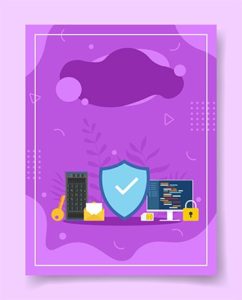
Importance: Threat Modeling: Designing for Security offers actionable and tested advice for system architects, software developers, security professionals, and managers. From Chapter 1, the book teaches how to threat model. The book highlights how one can use models to predict and counter security breaches, even before they begin coding. The book is jargon-free, provides proven frameworks, and is accessible, making it ideal for a beginner. The information readers learn from the book allows for the integration of the information into real projects on a tight schedule. The book gives value from threat modeling all things, including things like the Contact Us page.
Critics: Although the book explains the practical aspects of software security, it is unnecessarily long. Most of the information could be summarized into fewer pages, but one can definitely read and learn vital techniques.
3. Social Engineering: The Science of Human Hacking
Overview: is a cybersecurity book that takes readers through the craftier side of hacking.
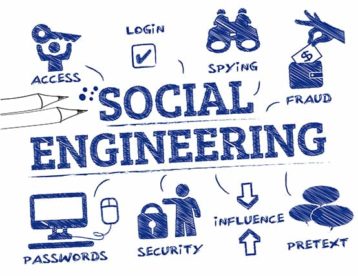
Author: Christopher J. Hadnagy is the author of Social Engineering: The Science of Human Hacking. Christopher is an IT entrepreneur and author who also provides services as an information technology consultant. He is acclaimed for IT security education and establishing the Innocent Lives Foundation, which identifies and tracks child trafficking.
Length: The book has 323 pages, in which there are 11 chapters, each with a comprehensive lesson on social engineering to help one gain valuable skills and get protected online.
Release Date: Published on June 25, 2018, the book is one of the best resources for anyone looking to learn about cybersecurity. The book provides lessons that equip one with actionable skills that can be applied to protect data.
Pricing: On Amazon, the book is listed at $35 for paperback and $21 for the ebook. However, there’s currently a discount on the paperback, making it available for $21.49. One can also get the audio CD for $27.29, while the audiobook is free.
Where to Buy: Some of the platforms that list the book include Amazon, Barnes & Noble, Audible, Apple Books, Alibris, and Walmart eBooks.
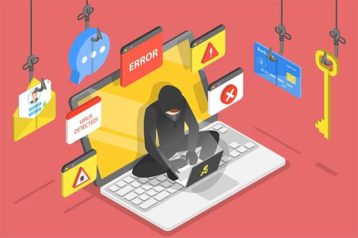
Information: In the book, Christopher Hadnagy explains the techniques that can fool even the best security personnel. He also shows how the techniques were applied in the past to gain access to sensitive data. The way humans make decisions affects many things, including emotions and security. From the beginning of time, hackers figured out ways to exploit the decision-making process to get people to take actions, not in their best interest.
The second edition comes with current methods and shares stories and examples, including scientific studies to demonstrate how decisions are exploited. Systems and networks are prone to hacking, but it’s easy to use technological solutions to protect them. When the system is a human being, it’s not possible to use any software to prevent the hack, and no code can lock user information down indefinitely. The book shows how human nature and emotion are a weapon that malicious people use through social engineering. Through the book, readers learn how to identify and predict manipulation, as this book takes one inside the mind of the social engineer.

This is one of the best cyber security and ethical hacking books since the book gets the reader to first think like a social engineer and with this approach teaches them how best to protect a system. The book helps users to learn about the most common social engineering tricks hackers use to access a system. Also, the book helps one discover the techniques that don’t work. By understanding how the science behind decisions and emotions is used by social engineers, it becomes easier to identify attempted security breaches.
Importance: The book’s goal is to help readers adopt counter-measures that will help keep hackers at bay. When one works following the social engineer’s playbook, there’s the advantage of foresight. Social Engineering offers the reader inside information to mount a solid defense.
Hadnagy also shares his mistakes with the reader. Despite having success stories, Hadnagy also highlights his disaster stories, which show that even the most skilled security experts can fall for the tricks of a social engineer. Use the many examples to learn methodologies on how to use social engineering to shield against cyber attacks.
Critics: Most of the images are not legible as the visuals are in black and white. Still, the book provides good information readers can use to build a foundation for digital security.
4. Hacking Exposed 7: Network Security Secrets and Solutions

Overview: is a book that goes into the hacker’s mind and prepares the reader to deal with different kinds of security breaches. This is one of the best books to read for cyber security to build an impenetrable system. Hacking Exposed 7 deals with a system’s security, and the tactics cyber-criminals apply. The book helps in understanding how to minimize exposure and design defense strategies for an IT system.
Author: Hacking exposed is written by three people: George Kurtz, Stuart McClure, and Joel Scambray. George Kurtz is the CEO and co-founder of CrowdStrike, a cybersecurity company. He also served as the chief technology officer of McAfee. Stuart McClure is the CEO of Cylance, a company that offers a math-based approach to cyber threats detection. Before Cylance, Stuart McClure worked as General Manager at Intel/McAfee. Lastly, Joel Scambray works at Cigal as the Managing Principal. Cigal is a software consulting firm.
Length: The book features768 Pages, which include 12 chapters. Each chapter builds on the knowledge acquired from previous chapters, giving readers a smooth progression if looking to learn about hacking.
Release Date: The book was published on August 1, 2012, giving readers a preview of the life of a computer hacker.
Pricing: For Kindle, one can buy the book on Amazon at $29.99. The paperback version costs $11.75.
Where to Buy: The best place to buy the book is on Amazon but it is available on some used markets.
Information: In the book, readers can explore case studies that highlight the latest methods used by hackers and field-tested remedies that are applicable to defeat the attacks. With this information, it’s easy to understand how to block infrastructure hacks, neutralize malicious code, minimize advanced persistent threats, fortify UNIX networks, and secure database and web applications.
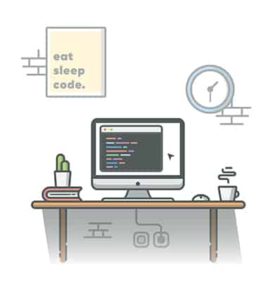
Written by three cybersecurity experts with experience handling hacking from a scholarly perspective, Hacking Exposed 7 dives deep into cyber security, from studying counter-measures to footprinting. This is a book designed to quench the curiosity one might have about hacking as a practice. Cybersecurity is a volatile field with concepts that are becoming irrelevant as new information surfaces.
Hacking Exposed provides all the recent knowledge and bits from the past showing the evolution of cybersecurity to help readers have a firm grasp of the subject. The book gives insight into cybersecurity in a clear way and uses examples. The book is constantly revised with new editions to keep readers up-to-date on developments in the cybersecurity field.
Importance: Readers can use the book to bolster system security and defeat the tactics and tools cyber-criminals use. Hacking Exposed offers expert advice and defense strategies. The case studies show how to obstruct APTs and meta-exploits. The book also offers information on defense against UNIX-based root access. The book provides comprehensive knowledge on cybersecurity, including block SQL injection, embedded-code attacks, and spear phishing. Also, the book shows how to detect and remove rootkits, malware, worms, and Trojans.
Critics: Some of the techniques are old, but the book still provides a solid foundation to use to build vital skills in cybersecurity.
5. Ghost In The Wires: My Adventures as the World’s Most Wanted Hacker

Overview: Written in 2011 by Kevin Mitnick with the assistance of William L. Simon, is a historical account of Kevin’s life.
Author: The book was authored by Kevin Mitnick and William L. Simon. Kevin Mitnick is a convicted hacker and a computer security expert who is best known for his high-profile arrest in 1995 which led to him spending five years in prison for communications-restricted crimes. William L. Simon, on the other hand, has co-authored/ authored over 30 books, including several New York Times and international bestsellers.
Length: The book is 448 Pages and ranks among the top 100 books in Computer Hacking and Computer Network Security.
Release Date: Published on April 24, 2012, the book takes readers through a journey into the life of hackers in the different chapters.
Pricing: A free Audiobook can be found on Amazon.The kindle costs $12.99, while the paperback version sells at $11.28 on Amazon.
Where to Buy: The ideal place to get the book is on Amazon, but interested readers can also buy the book from online stores like Apple Books, Abebooks, and Walmart eBooks.
Information: In the book, Kevin details his life from early childhood to his incarceration and beyond. This is among the cyber security learning books one can use to learn about hacking from the hacker’s perspective. Kevin was an elusive computer break-in artist. He accessed networks and computers at big companies, and regardless of the security measures the companies applied, Kevin Mitnick was always faster and eluded authorities. He would sprint through cellular networks, phone switches, and computer systems.
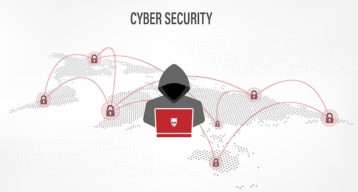
The story begins by describing Kevin’s propensity for becoming an early childhood escape artist. In his account, Kevin provides information about influences in his early childhood that inspired him and helped him learn about the world of hacking. His first hack, he details, was when he punched his own bus transfers, allowing him to ride a bus around Los Angeles free of charge. He idolized Bruce Lee, Jim Rockford, and Harry Houdini.
Kevin spent a good part of his time reading and learning things many people are not supposed to know. His biggest influencers were The Big Brother Game and The Paper Trip. The books helped him learn from the forbidden apple, setting the groundwork for his social engineering and hacking exploits later in life. Over time, Kevin’s curiosity expanded into phreaking, computer hacking, lock picking, and social engineering. He continued to sharpen his skills and improved his computer skills, overcoming seemingly impossible targets. The story of Kevin provides insight into the motivation and minds of what we currently know as “hackers.”
While Kevin could have achieved great financial gains from his exploits, it did not happen. His motivation was the thrill that came with the chase and the satisfaction he drew from accomplishing a difficult mission. As time passed, his addiction deepened, making him a slave and a master as well. His excellent social engineering skills helped him obtain corporate secrets, so he had to live on the run for years.

Importance: When one reads the book, it’s easy to understand the thin line between addiction and conscience. His “need for speed” led to his demise and ultimately made him one of the most wanted men by the FBI. Through Ghost in the Wires, Kevin describes his techniques, equipping readers with vital knowledge about how a hacker or social engineer would attack a system. To ensure adequate protection, the book helps readers learn about the vulnerabilities hackers target.
Critics: The book is technically interesting and provides valuable information. However, it can feel repetitive because of the style of the content.
6. Cult of the Dead Cow: How the Original Hacking Supergroup Might Just Save the World

Overview: At first glance, the shares memories of a fascinating time in the history of cybersecurity – the early 1980s to mid-2000s. It was during this period that the world moved from dial-up modems to what is now known as the internet. Back then, the term “hacker” meant someone clever and interested in how technology works. Joe Menn has been working as a journalist covering cybersecurity since the early days of the internet. For this book, he explores the infamous hacktivist group The Cult of the Dead Cow (cDc).
Author: Joseph Karl Mann is a long-serving and highly respected journalist in the cybersecurity space. He was awarded the Best in the Business award by the Society of American Business Editor three times.
Length: Cult of the Dead Cow includes 272 Pages, a compact book that provides a comprehensive preview into the life of one of the most notorious hacking groups.
Release Date: The book was published on June 4, 2019, and has since claimed an important spot among the top cybersecurity books.
Pricing: Cult of the Dead Cow is listed on Amazon for $35, but with the discounted price, one can get the kindle copy for $11.99, and the hardcover for $28.00. The discounted price for the audio CD is $14.89.
Where to Buy: The book is available on different platforms, including Amazon, Apple Books, Google Play, and Audible.

Information: In the book, Menn points to things he sees as a missing element in the tech industry, as companies like Google and Facebook dominate the world’s culture. He argues that the leaders of these big companies don’t keep in mind basic ethics when making decisions that drive the growth of their firms. Menn hopes that by sharing his thoughts and describing the journey of the cDc, he can help with the blueprint for cybersecurity in the future. He believes the “Big Tech” firms can use these stories as a background to design a more secure framework.
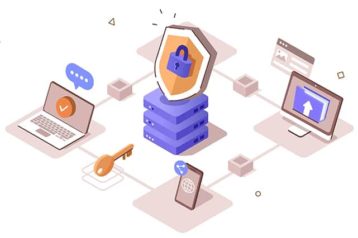
Importance: Menn argues that the more powerful computers and machines become, the sharper human ethics need to be. With the combination of profit-seeking algorithms and corrupt opportunists, the past few years have been a lesson that applied thinking is a critical infrastructure. The most successful hackers are excellent with applied thinking, so these are people who cannot be ignored despite advances in security software. The message of the book is that to make a positive change in the digital world, one should endeavor to remain lawful, but sometimes it might also be necessary to explore the chaotic side.
Critics: Although the book provides a detailed account of American hackers and their activities, not much information about hacking has been provided. It’s a good book for people who want to understand the intricacies that involve hacking, but don’t expect detailed hacking lessons.
7. The Art of Invisibility: The World’s Most Famous Hacker Teaches You How to Be Safe in the Age of Big Brother and Big Data

Overview: Kevin Mitnick shares ideas to help readers explore content online without leaving a trace. He notes that every step one takes online is tracked and data about the activity stored, so most of the big tech firms have a profile with each user’s identity. Governments and big companies want information about users, which can be exploited by knowing what everyone does. Privacy is a luxury few can understand or afford. Kevin Mitnick explores all these topics on .
Author: Kevin Mitnick, the author of The Art of Invisibility, is a computer security consultant who is also a convicted hacker and author. He spent five years in prison for committing communications and computer-related crimes.
Length: The book offers 320 Pages and goes deep into the world of big data to help one understand how to explore the internet without leaving traces.
Release Date: The book was published on February 14, 2017, and ranks among the best cybersecurity books, helping readers understand how to secure personal data.
Pricing: The audiobook is available for free but the kindle costs $11.99. The hardcover is $61.00, and the paperback costs $13.91.
Where to Buy: The book is available on Amazon, but can also be found on other platforms, including Walmart eBooks, Apple Books, Google Play, and Audible.
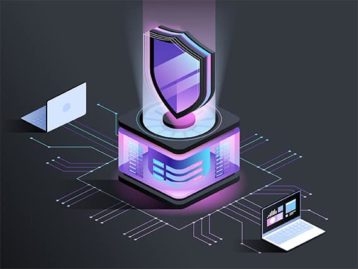
Information: The book is an explosive but practical guide to hacking and cybersecurity. To share the message, Kevin Mitnick uses real-life stories that detail the things happening without knowledge. The book teaches the art of invisibility, which is applicable in online and real-world situations. Mitnick uses simple step-by-step instructions to help readers understand how companies can access people’s data. The book covers many key topics, including password protection and how to use Wi-Fi without getting exposed to data breaches. Also, Mitnick shares advanced techniques that help maximize online anonymity. Kevin understands how one can exploit vulnerabilities and what users should do to prevent exposure to security and privacy risks.
Formerly, Kevin Mitnick was a famous hacker, who was most wanted for hacking the most powerful companies and agencies. At one point, he went on a three-year run escaping the FBI. Now, he’s a reformed individual widely acclaimed as an expert on computer security. The book, The Art of Invisibility is not meant for superheroes but has power people should acquire in the digital age to ensure protection from Big Data and Big Brother.
Importance: The text highlights data science for cyber security and is insightful, intriguing, and educational as it explores the mind of someone who mastered social engineering. This is a lesson to ensure protection after learning how user data can be used to perpetrate crimes. The revolving theme is that everyone is being tracked. For example, when a person uses an email, the company tracks these people, when one visits a website, there are trackers. Even when using a cell phone, the company logs the data. The author discusses the use of technology and the internet and shows how to become invisible and avoid being tracked.
Critics: Some of the content is only suitable for people with a high level of computer literacy, so the book might not appeal to the average person.
8. Practical Malware Analysis: The Hands-On Guide to Dissecting Malicious Software

Overview: To explore interesting O’Reilly cyber security books, by Michael Sikorski and Andrew Honig is a good read. Unlike other advanced security books, this does not assume the reader knows about the field. The book does not present information in a way that only targets those with knowledge of how executable files work. The book helps one start at the beginning and gradually gets up to speed on code analysis in malware.
Author: Practical Malware Analysis is the work of Andrew Honig and Michael Sikorski. Andrew Honig is an assurance expert working for the Department of Defense. He also offers courses on reverse engineering, software analysis, and system programming. His co-author, Michael Sikorski, is a consultant at Mandiant and provides research and development for security systems at the company.
Length: The book offers information over 800 Pages, taking the reader through a step-by-step process to help understand everything about malware analysis and how to protect systems.
Release Date: Practical Malware Analysis was published on February 1, 2012.
Pricing: On Amazon, the book is available for $35.99 as the kindle and $58.99 for the paperback.
Where to Buy: One can get the book on different online stores, including Google Play, Amazon, Apple Books, Audible, and Walmart eBooks.

Information: In the book, readers learn how to set up virtual machines that allow users to safely run dynamic analyses of what malware does when running. Disassembling malware to understand what it does requires understanding how applications and processes work. A person needs diverse information, from memory to code and registry and network stacking. The book is an excellent introduction to Windows internals, as readers get to understand the processes happening inside Windows. The book helps the reader think about security issues and the protections one can use in the operating system.
Note:
There’s a section on 64-bit processing within the advanced topics near the end of the book. This section helps readers learn examples of malware, which is a practical approach. Reading through examples or instructions is not enough to help the reader understand an explanation. This does not mean the reader can apply the understanding right away. So, every chapter offers three accompanying labs with exercises, tips, and questions. These are presented in analysis format.
Part two of the book explores advanced static analysis, developing skills and knowledge. IDA-pro, introducing X86 Disassembly, and recognizing C-code constructs. Also, this section introduces how to examine malware as executed in a Windows environment. In part three of the book, the author examines advanced dynamic analysis. The section looks at debugging, including kernel debugging with WinDbg.
Importance: The book guides readers through malware behavior, data encoding, covert malware launching, and malware-focused network signatures. The book gets deep into technical details, covering topics like anti-reverse engineering. The book is easy to follow as a developmental course as the reader’s knowledge grows from the simple to the complex.
Critics: Some of the methods are too old. For example, the book recommends using Windows XP operating system for analysis. Some of the software recommended is obsolete today.
9. Applied Cryptography: Protocols, Algorithms, and Source Code in C
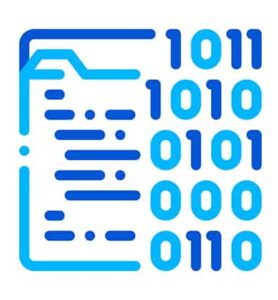
Overview: Among the best cyber security books, by Bruce Schneier is the definitive reference on cryptography. As a developer who needs to understand capabilities like digital signatures, which depend on cryptographic techniques, this book gives a perfect overview and is considered the definitive guide on the subject.
Author: Bruce Schneier is the author of Applied Cryptography. Bruce is a computer security expert, writer, privacy specialist, and cryptographer. He’s a lecturer at the Harvard Kennedy School, where he teaches Public Policy.
Length: The book offers 758 Pages of content, which is presented through 25 chapters, each covering the topic comprehensively.
Release Date: Published on October 18, 1996, Applied Cryptography is a definitive book on capabilities that rely on cryptography.
Pricing: On Amazon, the book is normally listed for $60, but it is currently available for $17.10 for the hardcover and $12.71 – $44.52 for the paperback.
Where to Buy: The book can be found on different online stores and libraries, including Amazon, Thriftbooks, Audible, Barnes & Noble, Walmart eBooks, and Apple Books.
Information: The book details the inner workings of real-world cryptographic algorithms, including RSA public-key cryptosystems and Data Encryption Standard. The text offers source code listings and advice on different practical aspects of the implementation of cryptography, including the importance of generating random numbers and securing keys.
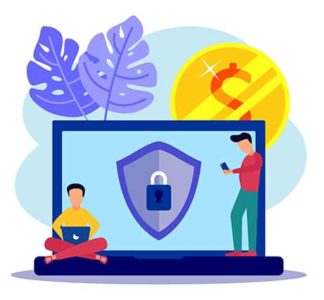
Importance: Applied Cryptography helps electronic communicators and programmers understand how to use cryptography, a technique of deciphering and enciphering messages to maintain privacy when using a computer system. The book describes cryptography algorithms and offers practical advice to help in implementing the ideas into cryptographic software. The examples show how to use the ideas to address security problems. With this knowledge, a programmer can design networks, computer applications, and storage systems, and help developers build security into their systems and software.
Critics: The text is too long, and the book is suited as reference material. The book is comprehensive, but some concepts are out of date.
10. CompTIA Security+ Get Certified Get Ahead
Overview: is a beginner cyber security book for people looking to learn the basics of cybersecurity and build their skills gradually. The book is also recommended for anyone preparing for the SY0-501 exam. While the book does not cover all exam objectives for the exam, answers to most of the basics are provided. This is an update to the SYO-201, SYO-301, and SYO-401 guides, which assisted many readers waiting to take the exam.

Author: Darril Gibson is an author who has authored or co-authored over 35 books on Network+, Windows Server, Security+, CompTIA A+, SQL Server, and more.
Length: The book includes 610 pages, covering all the SY0-501 objectives through the 11 chapters.
Release Date: Published on October 3, 2017, this is a must-read for anyone who wants to prepare for a security exam.
Pricing: The book is listed for $39.99, but the kindle is available for free. For the paperback version, Amazon currently offers a discount, so it is available for $16.99.
Where to Buy: The book is listed on Amazon, and can also be found on Audible and Amazon eBooks.
Information: Written by Darril Gibson, an accomplished professional trainer, and author, this is a gift to anyone who wishes to pass the exam and also begin a journey in cybersecurity. The CompTIA Security+ covers SYO-501 objectives and offers the same elements readers explored in the previous versions. All the chapters present topics through an easy-to-understand format, which includes real-world examples of principles in action. The author applies analogies and explanations honed in the classroom that many students have used to master Security+ content.
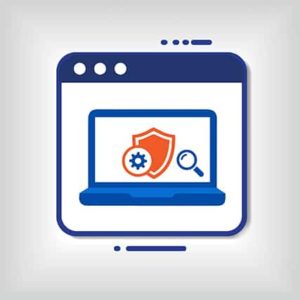
Through the book, it’s easy to understand vital and relevant security topics that are applicable in the Security+ exam. The book offers this information without overloading the reader with unnecessary details. In addition, the chapters offer a comprehensive review section that helps readers focus on only the most important things. For people in the process of pursuing any advanced security certification, this book is an important guide that will help to lay a foundation of security knowledge.
Importance: With more than 300 realistic practice questions featuring in-depth explanations, the book helps the reader test comprehension and readiness. The book includes a 75 question pre-test, a post-test with 75 questions, and other practice test questions after each chapter. The practice test questions offer a detailed explanation that explains the reasoning and context behind the question. Also, the book provides access to free online resources, which include additional practice questions and labs. With all these resources, the student is prepared to pass the exam on the first attempt.
Critics: Some readers claim that the test questions in the book are for elementary school, while the exam is at the college level. Therefore, the exam questions do not align with the test questions in this book.
Which Terms Can You Learn from Cybersecurity Books?
Here are 10 of the most common terms contained in cybersecurity books.

- Cloud – This is a technology that makes one able to store and access files or services through the internet. This is a collection of computers with big storage capabilities that serve requests remotely.
- Virtual Private Network – A tool that allows readers to maintain anonymity while browsing the internet. A VPN masks location and encrypts traffic.
- Breach – This is when a hacker succeeds in exploiting a vulnerability in a device, gaining access to its network and files.
- Firewall – Defensive technology that keeps the bad guys out. A firewall can be software or hardware-based.
- Malware – The term that describes the different forms of malicious software that wreaks havoc on a computer. Forms of malware include worms, Trojans, viruses, and ransomware.
- Ransomware – Malware that prevents users from accessing files on a computer. This holds the data hostage by encrypting files and demanding a ransom to decrypt the data.
- Rootkit – This is malware that helps cyber criminals remotely control a computer. A rootkit is damaging because it’s hard to detect, so this can live on a computer for a long time.
- Encryption – A process of encoding data that prevents theft. Encryption ensures the data is only accessible with a key.
- Social Engineering – This is a technique attackers use to deceive and manipulate people to access private and sensitive information. The scam is built around how people think, so the hacker understands what motivates people’s actions.
- Deepfake – A video clip or audio that is edited and manipulated to seem real and believable. The consequence is that deepfakes can convince people into believing a theory or story, which could result in a big political or financial impact.
Will CyberSecurity Books Help You Gain Web Security Skills?

Yes, the best cyber security books for beginners will help the reader gain web security skills. To manage system security effectively, one needs several skills, including networking and system administration. Also, it’s important to understand operating systems and virtual machines. It’s also important to have coding skills and network security control skills. Most of these are topics in cybersecurity books. Some books gradually approach topics, so it’s easy to move from a complete beginner to a security expert with excellent coding skills. Learning cybersecurity skills is an important part of upskilling in the online space.
How Often should CyberSecurity Books be Read to Increase Knowledge about CyberSecurity?
For people interested in building skills as a cybersecurity expert, it’s recommended to read cybersecurity books as often as possible. As a beginner, it’s important to be dedicated to learning about the basic concepts. Find the best cyber security books for beginners through Reddit suggestions. The most knowledgeable professionals in cybersecurity read to improve skills almost every day.
Will CyberSecurity Books Get You a Job in Web Security?
Reading cybersecurity books will equip the reader with vital skills, necessary to work in the web security field. With the skills gained, the reader can apply for certification or take brief online courses. With certification, it’s easy to apply for jobs and get hired. Learn about the best cybersecurity jobs to get started applying the skills.
Who are CyberSecurity Books Written by?

Authors in the cybersecurity space comprise cybersecurity experts with years of experience and rich educational backgrounds. Check out books by the best cybersecurity experts. Get a cryptography network security and cyber law textbook pdf from an acclaimed expert to build skills while learning from the best.
Examples include Christopher J. Hadnagy, an American author, information technology security consultant, and IT entrepreneur. He is the CEO of Social Engineer and the author of Social Engineering: The Science of Human Hacking.
Also, learn from Adam Shostack, an author, consultant, and a leading expert on threat modeling. He is also a game designer and boasts decades of experience in cybersecurity. He authored Threat Modeling: Designing for Security, one of the best cybersecurity books for beginners.
Lastly, readers can learn a lot from Darril Gibson, the CEO of YCDA, LLC. Other titles he claims include MCSE, CompTIA Security+, CASP, and CISSP. Darril has contributed to over 25 books on Network+, CompTIA A+, Security+, SQL Server, and more.
Is using a VPN a part of CyberSecurity?

Yes, a VPN is a part of cybersecurity as a VPN allows users to disguise their data traffic online. Using a VPN, hackers or cybercriminals cannot decipher data as the data is encrypted. Find the most secure VPNs to ensure connections are always protected against cybercriminals. A suggested read on VPNs is “Guide to Firewalls and VPNs” by Michael Whitman and Herbert Mattord, which highlights the critical role of VPNs and firewalls in ensuring excellent cybersecurity.

